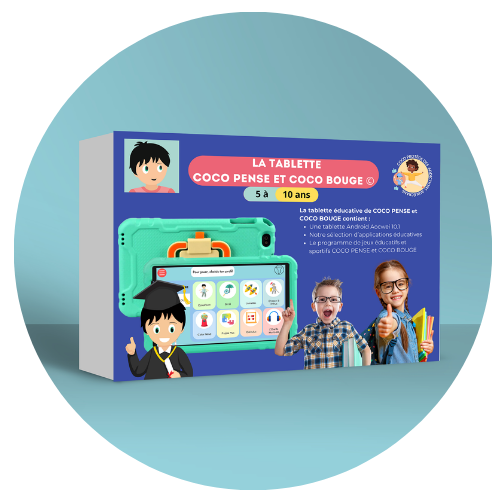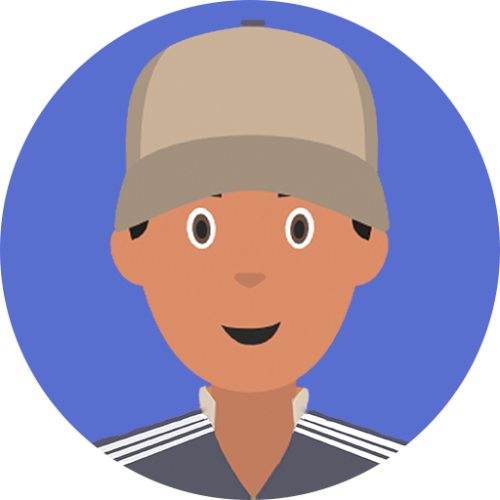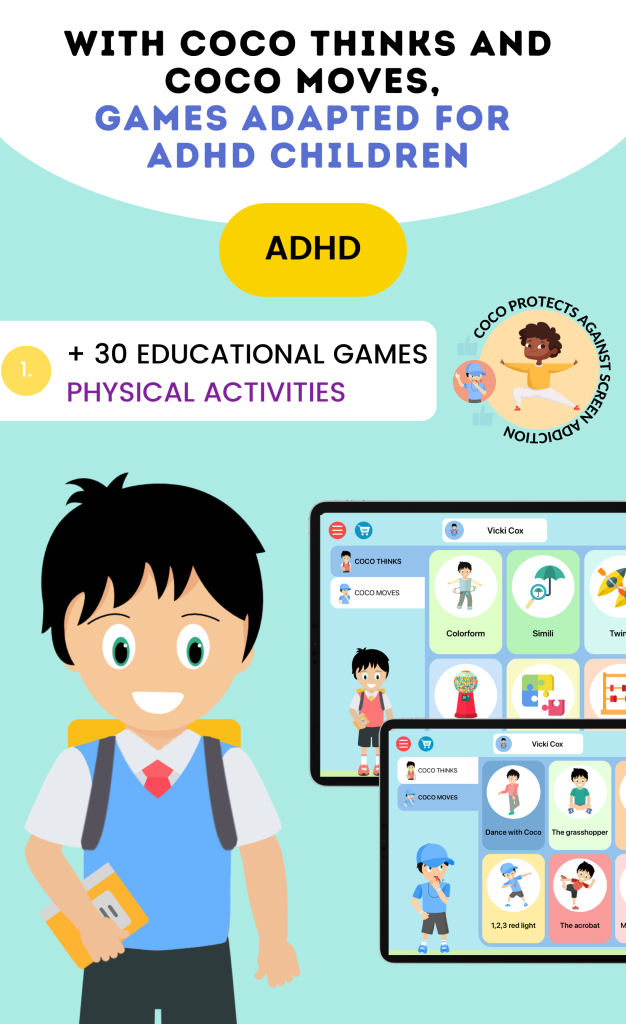The interplay between these two disorders can create a complex web of difficulties, making it essential to understand their relationship. Individuals with ADHD may experience heightened levels of anxiety due to their struggles with focus and organization. The constant feeling of being overwhelmed can exacerbate anxiety symptoms, leading to a vicious cycle where anxiety further impairs attention and focus.
Conversely, those with anxiety may find that their symptoms mimic or mask ADHD traits, complicating the diagnostic process. Recognizing the nuances of both conditions is crucial for effective management and treatment, as addressing one without considering the other may lead to incomplete solutions.
Developing Coping Strategies
Building on the understanding of triggers and symptoms, it is essential to create personalized coping strategies that address the unique challenges posed by ADHD and anxiety.
-
Coping Strategies for ADHD
-
Break tasks into smaller steps: Divide complex tasks into manageable chunks to reduce overwhelm and increase focus.
-
Use organizational tools: Utilize planners, calendars, checklists, or digital reminders to keep track of assignments and deadlines.
-
Incorporate regular breaks: Schedule short breaks during work or study sessions to refresh attention and prevent fatigue.
-
Establish routines: Create consistent daily schedules to provide predictability and structure.
-
Minimize distractions: Designate quiet, clutter-free spaces for focused work whenever possible.
-
-
Coping Strategies for Anxiety
-
Practice deep breathing exercises: Use techniques like diaphragmatic breathing to reduce immediate physical symptoms of anxiety.
-
Engage in progressive muscle relaxation: Sequentially tensing and relaxing muscle groups to ease physical tension.
-
Incorporate physical activity: Regular exercise helps decrease anxiety levels and improves mood.
-
Use cognitive-behavioral techniques:
-
Reframe negative or catastrophic thoughts into more balanced, realistic perspectives.
-
Practice positive affirmations to build self-confidence and reduce worry.
-
-
Develop mindfulness habits: Focus on the present moment through meditation or grounding exercises to reduce rumination.
-
-
Integrating Strategies for Both ADHD and Anxiety
-
Create a personalized “toolkit” combining organizational supports and relaxation techniques.
-
Encourage self-monitoring to recognize early signs of overwhelm or anxiety and use coping strategies proactively.
-
Seek support from caregivers, educators, or therapists to tailor and reinforce coping skills.
-
Creating a Support System
Building a strong and reliable support network is essential for individuals coping with the dual challenges of ADHD and anxiety. A supportive environment can provide emotional reassurance, practical help, and accountability for managing symptoms effectively.
-
Engage Family and Close Friends
-
Promote open communication: Encourage honest conversations about challenges, needs, and progress.
-
Educate loved ones: Help family and friends understand the nature of ADHD and anxiety to increase empathy and reduce misunderstandings.
-
Create a judgment-free space: Foster an environment where individuals feel safe discussing setbacks and seeking help.
-
-
Collaborate with Educators and School Staff
-
Develop individualized support plans: Work with teachers to create accommodations (e.g., extended time on tests, quiet spaces).
-
Encourage consistent feedback: Maintain regular check-ins to monitor academic and emotional progress.
-
Ensure alignment across environments: Coordinate strategies between home and school for consistency.
-
-
Involve Mental Health Professionals
-
Access therapeutic support: Psychologists, counselors, and therapists can offer tailored treatment plans, including CBT or coaching strategies.
-
Explore medication management: Psychiatrists can assist with evaluating and adjusting medications if needed.
-
Engage in regular follow-ups: Consistent sessions provide ongoing guidance and a space to evaluate coping strategies.
-
-
Join Peer Support Groups
-
Connect with others facing similar challenges: Peer groups—online or in-person—offer understanding and shared experiences.
-
Learn from lived experiences: Members can share practical tips and emotional insights that resonate more personally.
-
Reduce feelings of isolation: Knowing others face similar struggles can boost morale and resilience.
-
-
Establish Accountability Partners
-
Use check-ins for motivation: Regular touchpoints with a trusted person can help maintain progress and encourage goal-setting.
-
Celebrate small victories: A support system should acknowledge improvements, no matter how minor.
-
-
Leverage Community Resources
-
Explore local programs: Community centers, nonprofits, or advocacy organizations may offer educational resources or workshops.
-
Utilize online platforms: Websites, forums, and webinars focused on ADHD and anxiety can provide valuable tools and information.
-
Practicing Mindfulness and Relaxation Techniques
Integrating mindfulness and relaxation techniques into daily life can significantly help individuals manage the symptoms of ADHD and anxiety. These practices support emotional regulation, enhance focus, and reduce stress by anchoring attention in the present moment.
-
Engage in Mindfulness Practices
-
Practice present-moment awareness: Focus attention on thoughts, sensations, and surroundings without judgment.
-
Use mindfulness meditation: Spend a few minutes each day observing breath or body sensations to enhance concentration and reduce impulsivity.
-
Incorporate mindful walking or eating: Transform everyday activities into grounding experiences by paying full attention to each movement or sensation.
-
-
Try Breathing Exercises
-
Deep diaphragmatic breathing: Inhale slowly through the nose, hold briefly, and exhale through the mouth to calm the nervous system.
-
Box breathing technique: Inhale for 4 seconds, hold for 4, exhale for 4, hold for 4—repeat several times to reduce anxiety and improve focus.
-
Use breathing apps: Guided breathing apps can help establish a regular mindfulness practice.
-
-
Explore Progressive Muscle Relaxation (PMR)
-
Release physical tension: Tense and relax each muscle group, starting from the toes and working up to the head.
-
Increase body awareness: Learn to identify where stress manifests physically and how to consciously release it.
-
Use PMR before stressful events: Ideal for reducing pre-test or social anxiety.
-
-
Incorporate Yoga and Gentle Movement
-
Support mind-body connection: Yoga postures combined with breathing help calm the body and mind.
-
Promote physical balance and flexibility: These activities also release endorphins, improving mood.
-
Adapt to all levels: Simple poses can be modified for different ages or abilities.
-
-
Practice Guided Imagery and Visualization
-
Create calming mental imagery: Picture peaceful scenes like a beach or forest to mentally “escape” stressful moments.
-
Use scripts or audio guides: Many free recordings are available to guide visualization exercises.
-
Pair with breathing techniques: Combining visualization with slow breathing can enhance its calming effect.
-
-
Establish a Routine of Mindfulness
-
Start with short daily sessions: Even 5–10 minutes a day can build consistency and benefits over time.
-
Track progress in a journal: Reflecting on changes in mood or focus can reinforce the habit.
-
Integrate mindfulness into daily life: Apply techniques during stressful tasks or transitions (e.g., before school or work).
-
Seeking Professional Help
While self-guided strategies offer meaningful support, professional help is often essential for effectively diagnosing and treating ADHD and anxiety. Mental health professionals can provide expert guidance, individualized treatment plans, and structured interventions that significantly enhance outcomes.
-
Consult with Mental Health Professionals
-
Psychologists and psychiatrists can perform formal assessments to diagnose ADHD, anxiety, or co-occurring conditions.
-
Pediatricians or general practitioners can initiate referrals and help monitor treatment progress.
-
Neuropsychological evaluations can offer a deeper understanding of cognitive strengths and challenges.
-
-
Consider Evidence-Based Therapies
-
Cognitive-Behavioral Therapy (CBT) is highly effective for both ADHD and anxiety:
-
Helps individuals recognize and challenge negative thought patterns.
-
Encourages development of healthier responses to stressors.
-
Teaches problem-solving, emotional regulation, and self-monitoring skills.
-
-
Behavioral therapy can support younger children by reinforcing positive behaviors and managing impulsivity.
-
Parent training programs can empower caregivers with tools to manage symptoms at home.
-
-
Explore Medication Options
-
Stimulant medications (e.g., methylphenidate, amphetamines):
-
Often prescribed for ADHD to improve focus, attention, and impulse control.
-
Must be closely monitored for side effects and dosage effectiveness.
-
-
Non-stimulant medications (e.g., atomoxetine, guanfacine) may be recommended when stimulants are not well tolerated.
-
Anti-anxiety medications (e.g., SSRIs or benzodiazepines for short-term use):
-
Can reduce persistent worry, physical symptoms of anxiety, and panic attacks.
-
Best used in conjunction with therapy under professional supervision.
-
-
-
Collaborate on a Personalized Treatment Plan
-
Ongoing communication with healthcare providers is key to adjusting strategies based on changing needs.
-
Shared decision-making ensures that treatment aligns with individual values, preferences, and goals.
-
Integrated care—coordinating between therapists, doctors, teachers, and family members—can provide a more holistic support system.
-
-
Monitor Progress and Adjust as Needed
-
Track behavioral changes and emotional responses to interventions over time.
-
Reevaluate periodically to determine if the current approach is effective or if changes are needed.
-
Encourage feedback from the individual and those around them to ensure continued support.
-
-
Finding Balance and Self-Care
-
Taking care of your body is a foundational element in managing both ADHD and anxiety. Regular physical activity can help improve mood, increase focus, and reduce restlessness. Exercise such as walking, swimming, dancing, yoga, or team sports can channel excess energy and provide mental clarity.
-
Even short bursts of movement, such as 15–30 minutes a day, can be highly effective. Physical activity also helps regulate sleep patterns and manage stress, both of which are crucial for individuals with ADHD and anxiety.
-
Maintaining a balanced diet is equally important. Nutrient-rich meals that include proteins, complex carbohydrates, fruits, vegetables, and omega-3 fatty acids can help regulate energy levels and cognitive function. Avoiding high-sugar foods, excessive caffeine, and highly processed snacks can reduce irritability and prevent energy crashes.
-
Sleep hygiene plays a vital role in emotional regulation and attention control. Individuals with ADHD often struggle with sleep, but establishing a consistent bedtime routine, limiting screen time before bed, and creating a calm sleep environment can lead to better rest and improved daytime functioning.
-
Emotional self-care is just as important as physical health. Being kind and patient with oneself, especially during difficult moments, helps build resilience. Practicing self-compassion instead of self-criticism supports emotional growth and a healthier self-image.
-
Making time for hobbies and personal interests is a powerful form of stress relief. Activities like painting, writing, gardening, music, or reading can offer a sense of joy and creative expression. Engaging in something enjoyable daily contributes to emotional stability and personal fulfillment.
-
Staying organized helps reduce feelings of overwhelm. Tools like planners, checklists, alarms, and color-coded calendars can help individuals with ADHD stay on task. Breaking assignments or responsibilities into smaller, manageable steps makes them less intimidating and more achievable.
-
Creating routines and structure provides predictability and reduces anxiety. Having regular times for waking up, meals, study, breaks, and sleep builds a sense of control over the day. When life feels chaotic, structure offers a stable framework that supports mental focus.
-
Balancing work and rest is essential. Overcommitting can quickly lead to burnout, especially for those managing chronic conditions like ADHD and anxiety. Scheduling short breaks throughout the day and allowing time to recharge helps maintain consistent productivity without exhaustion.
-
Setting realistic goals fosters motivation and builds confidence. Celebrating small accomplishments, rather than waiting for big achievements, creates a positive reinforcement cycle that boosts self-esteem.
-
Maintaining healthy relationships contributes significantly to emotional well-being. Connecting with empathetic friends, supportive family members, or peer groups provides validation and understanding. Having someone to talk to or simply spend time with can lighten emotional burdens.
-
Learning to set boundaries is a critical self-care skill. Saying no to extra obligations, reducing exposure to toxic relationships, and protecting one’s energy are all ways to safeguard mental health.
-
Practicing mindfulness and relaxation techniques helps calm the mind and body. Mindfulness meditation, deep breathing exercises, progressive muscle relaxation, or guided imagery can reduce anxiety and improve focus. These tools help individuals remain grounded and less reactive in stressful situations.
-
Staying present is especially helpful for individuals with ADHD, who often feel pulled in multiple directions. Mindfulness encourages awareness of the current moment and discourages dwelling on past regrets or future worries.
-
Journaling is another effective practice. Writing down thoughts, emotions, and experiences can provide clarity and reveal patterns. This helps with emotional processing and identifying triggers, leading to more effective coping strategies.
-
Connecting with professionals is part of responsible self-care. Therapy, coaching, or medication may be necessary components of a balanced approach. Working with experts allows individuals to create personalized strategies that address both ADHD and anxiety in a sustainable way.
-
Being consistent and flexible is key. Some days will be easier than others, and self-care practices may need to evolve over time. What works during one stage of life may need to be adjusted later. Flexibility allows individuals to adapt to change while still honoring their needs.
-
Prioritizing joy and rest is not selfish—it is essential. Engaging in meaningful, uplifting experiences and allowing space for relaxation creates emotional balance. Whether it’s listening to music, going for a walk, watching a favorite movie, or spending time in nature, these moments recharge the mind and spirit.
-
In conclusion, balancing ADHD and anxiety requires ongoing commitment, intentional self-care, and a holistic view of health. When individuals actively nurture their bodies, minds, and emotions, they are better equipped to manage challenges and thrive in daily life. Self-care is not a luxury—it is a necessity for sustainable well-being.





